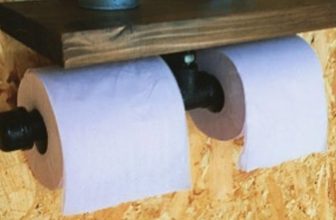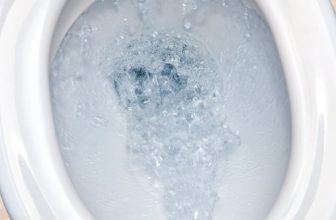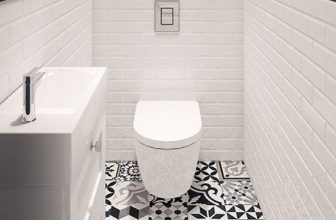Over time, the flawless function of your toilet may be impaired. You will need to settle its drain mechanism or repair (replace) individual parts.
In this article, I will explain how to adjust the water level in a toilet bowl depending on a flush system and answer some frequently asked questions.
It doesn’t matter if your toilet bowl and tank are overfilled, or vice versa, there is not enough water in them; these problems are completely solvable. My step-by-step guide will make this process even more effortless.
Water Level Adjustment Guide and FAQ
You do not need to have professional skills or specialized tools; you can easily adjust the tank’s required water level without calling a specialist at home. The main thing is to understand how your flush mechanism works.
Common problems
If the level in your tank is set incorrectly, it can lead to several serious consequences. Therefore, I do not recommend postponing the adjustment until later. Although this process may slightly differ depending on the type of flush system, the issues are usually similar.
Low level
If there is not enough water in the bowl, it is probably due to a low liquid level in the tank. No matter how good your toilet model is, there won’t be enough flow to flush waste in one go.
Ultimately, it can lead to clogging in the pipes and the need to clean them. Therefore, you should inspect the drain mechanism. The answer to how to raise the water level in a toilet tank can be found below.
Low water levels can be caused, among other things, by clogged vents, cracked toilet bowls, or damaged pipes. The latter is especially dangerous because the tubes are under the floor, and it is difficult to determine whether they are broken.
Also, the reason for the gradual emptying of the tank is the insufficient tightness of all elements. Over time, rubber gaskets wear out and do not adhere well to surfaces. Replace them to stop leaks and use water more efficiently.
High level
Too much water in a toilet bowl is a sign that your pipes are clogged. The debris prevents the liquid flow from completely leaving, and part of it remains in the bowl. Gradually, it will build up and may spill over the edges onto your bathroom floor.
You can use a plunger and chemicals to unclog your toilet or try to reach the trash with your hands (just remember to wear rubber gloves). And, of course, it is worth adjusting the float height on the flush system. Below is a step-by-step guide on how to increase the water level in a toilet.
Ball-and-arm float
Remove the top lid from the tank and inspect the internal mechanism. Ideally, the water level should be at least 1 inch below the overflow tube, vents, and fill valve.
Modern manufacturers even draw a line that shows the optimal height. If the liquid is above or below this line, then there is a need to adjust the level. Turn off the water supply, drain the liquid from the tank, and proceed with the adjustment.
Step 1: Conduct a general inspection
Carefully inspect all the parts of the flush mechanism. If you notice torn rubber gaskets or cracked plastic parts, you need to replace them.
Step 2: Check the float
The float is responsible for filling the tank with water. Its malfunction (skews, cracks, its membrane has stopped functioning) leads to failures in the whole system’s correct operation.
To adjust the toilet float, take a screwdriver and turn a screw on the fill valve. This way, you can set it higher or lower to the required level. I do not recommend turning the screw too much in one move, as adjusting the level is a fairly accurate process.
Step 3: Draw up water
To check if the height is set correctly, turn on the water supply, fill the tank, and press the flush button. Optimally, it is when the bowl remains about half-full after that. If the height still does not suit you, repeat the second step to adjust the toilet water level further.
If you still didn’t manage to achieve the desired level in the bowl after several attempts, you would have to call a specialist.
Cylinder float
In the case of a cylinder float, the first steps should be the same as in the previous part. You should remove the lid carefully, check the tank’s fluid level, and turn off the water supply. The devices that are equipped with cylinder flush systems are modern and much easier to operate and repair.
Step 1: Inspect the mechanism
A plastic cylinder acts as a float here, which moves up and down along a metal bar. On the side of it, you will find an adjusting rod, which is responsible for the water level in the tank.
Step 2: Adjust the level
For the toilet fill valve adjustment in tanks with this type of flush mechanism, you do not need any additional tools. It is enough to find and turn a dial on the adjusting rod in the desired direction to raise or lower the cylinder slightly.
In some more modern models, this mechanism has been replaced by a release clip. You need to pinch it with your fingers and pull it up or down to set the desired height.
Step 3: Draw up water
To test a new level, turn on the water supply, fill the tank, and empty it. The water should be half full in the bowl, and the tank should be filled to the required height. If the result does not satisfy you, repeat the previous point. Now you will know how to lower the water level in a toilet bowl if needed.
What causes the water level in the toilet bowl to drop?
There are several reasons why the level in the bowl may drop. I recommend checking if a drain pipe is installed correctly and if there are any clogs that prevent waste and water from passing through.
The level may decrease due to the cracks in your toilet, which appeared sometime after installation or during operation. Water gradually leaks through chips, so you need to find and repair all of them.
Why is the water level in the toilet bowl too high?
In most cases, it is clogged pipes that make the toilet bowl fills too high. In severe clogging, water can accumulate and eventually overflow the edges. Perhaps, a child’s toy or debris has got there, or limescale has blocked the passage.
Why is toilet tank filling too slow?
It can be due to improper float position (skewed), damage or clogs in a water supply pipe, worn toilet float valve, rust on metal parts, or too tight nuts. Suppose that the indicated reasons are not identified and eliminated in time.
In this case, they can lead to the appearance of an unpleasant odor, breakdown of the entire mechanism, and even damage the drain system of your neighbors from below if you live in an apartment building.
Fix the Problem Immediately
While too big or too small water volume may not seem like a big deal at first, the toilet water level adjustment should be made as soon as you find out a problem. Otherwise, it can lead to severe consequences.
As you have understood from my article, the float is responsible for the liquid level. It is not difficult to adjust its height, but if you are unable to do it after several attempts, call a professional plumber.
Have you encountered a water level problem? If so, what tips do you have? Please share your opinion with other readers!
Also read:
- Toilet Gurgling
- How to Measure Toilet Rough In
- Toilet Drain Pipe Sizes
- Toilet Wax Ring
- How to Shim a Toilet
- How to Unclog a Toilet That’s Backing Up Into the Bathtub



